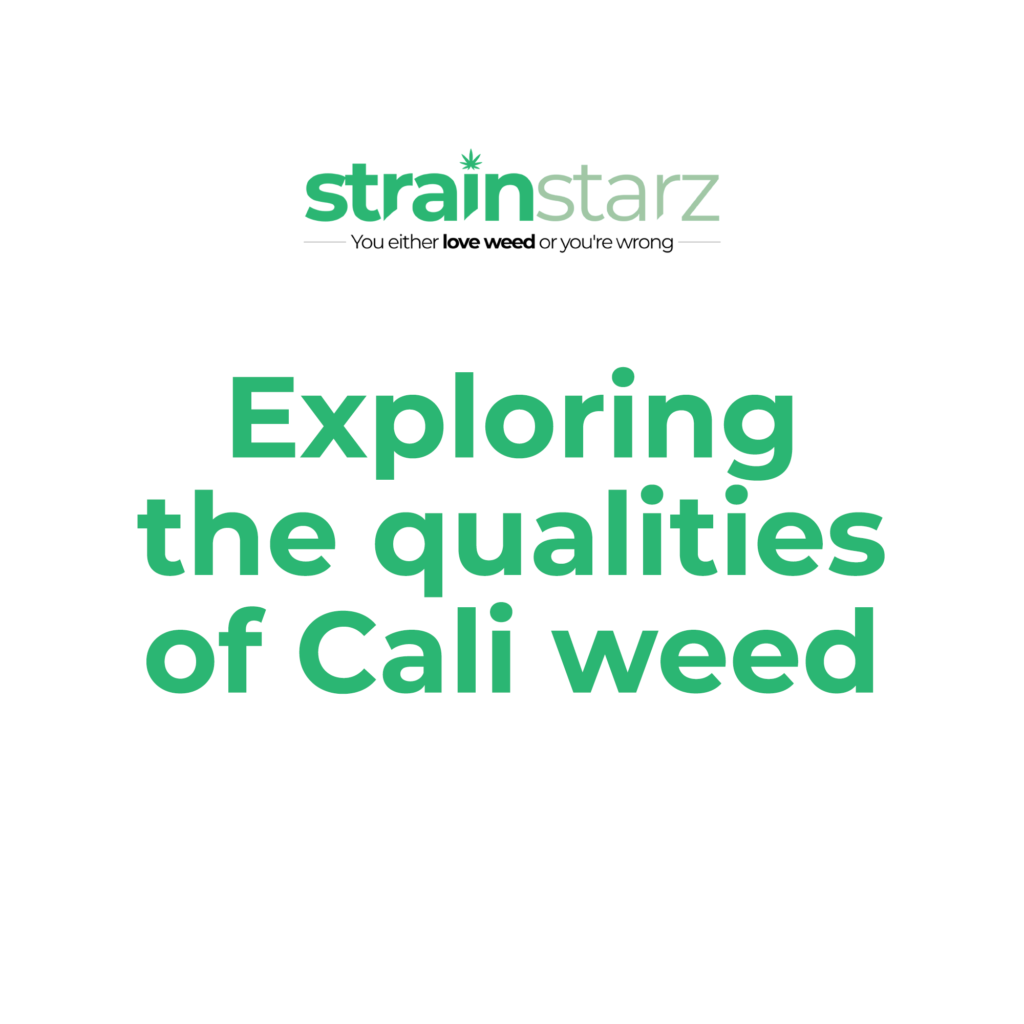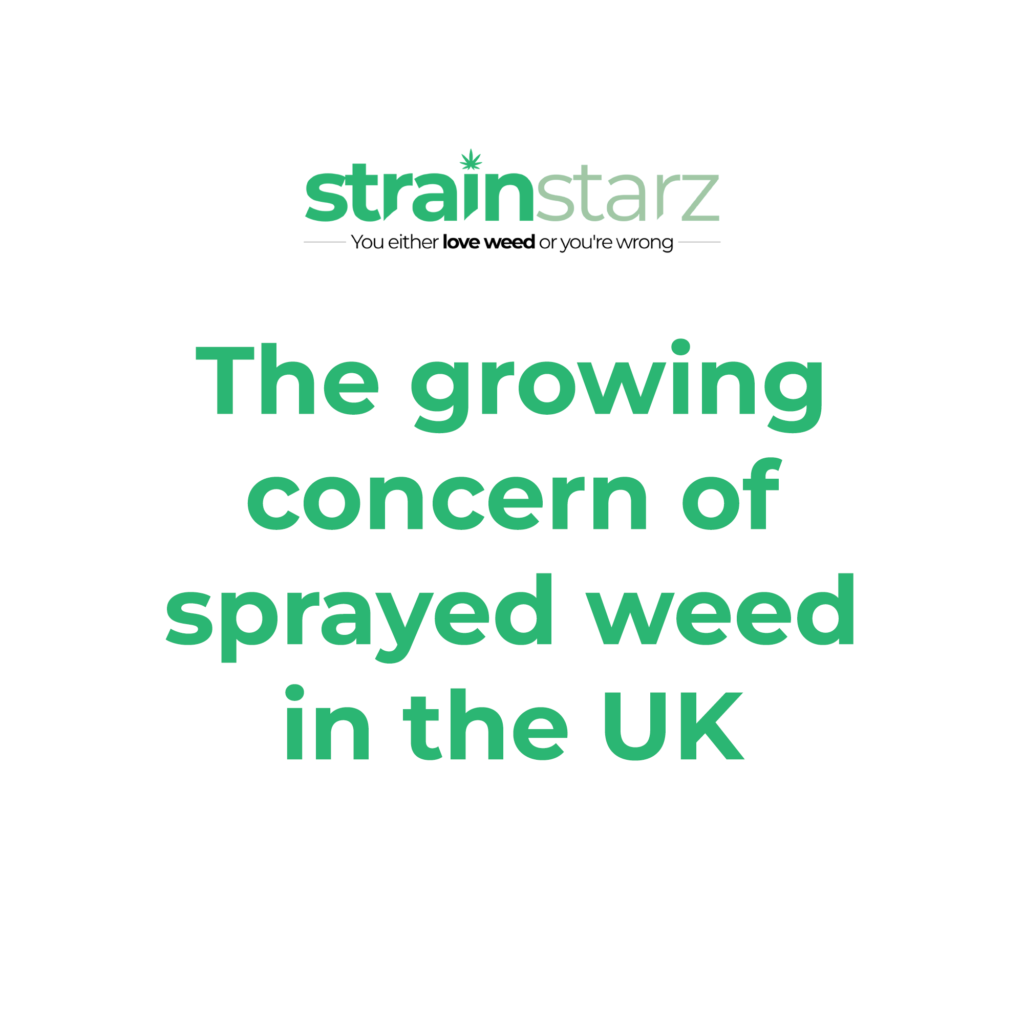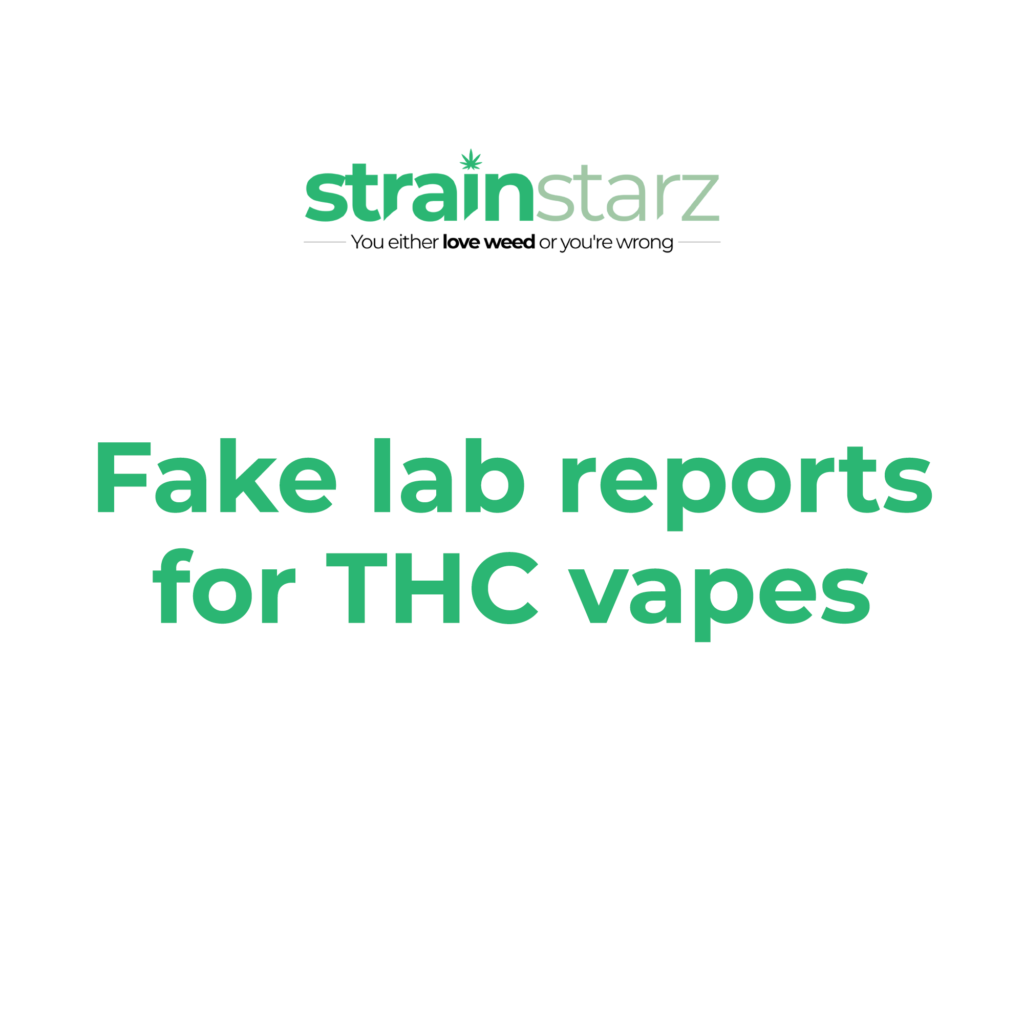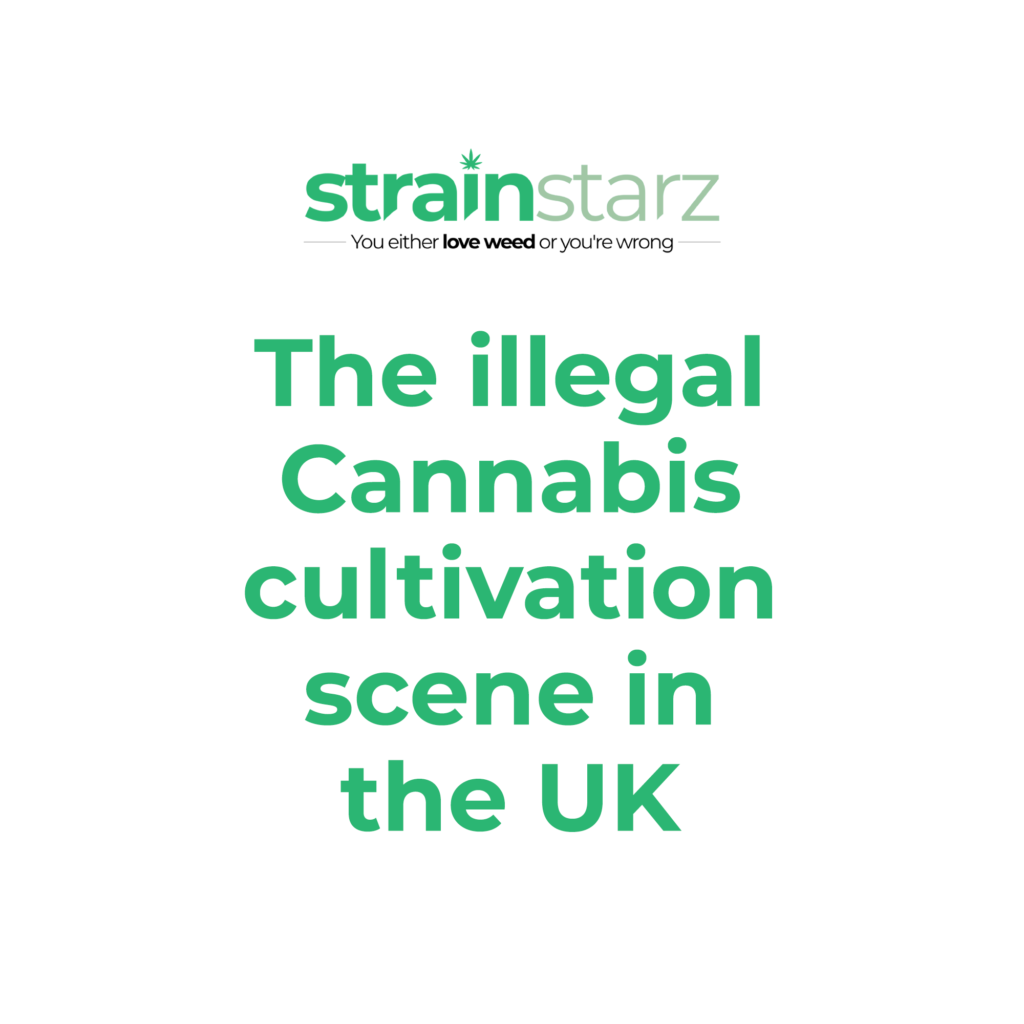Free Shipping On Crypto Orders, Click Here On How To Buy Crypto.🚀🛒
Vape, Edible & Rso Restock Is Live.

Over the past few years, cannabis extracts have become immensely popular, captivating the interest of both recreational and medicinal cannabis enthusiasts. These extracts, concentrated forms of cannabis, promise potent and diverse experiences. In this comprehensive overview, we will delve into the definition of cannabis extracts, the methods involved in their production, and the various types available in today’s market.
Understanding Cannabis Extracts: Cannabis extracts are concentrated versions of the plant’s active compounds, including cannabinoids, terpenes, and other beneficial elements. Obtained through various extraction methods, these compounds are separated from the plant material, resulting in a more potent and refined product. Extracts are valued for their enhanced potency, versatility, and precise dosing capabilities.
Production Methods:
Solvent-Based Extraction:
- Common solvents such as ethanol, butane, and CO2 are used.
- Solvents dissolve the desired compounds, extracting them from the plant material.
- The resulting solution undergoes purging to eliminate any residual solvents, ensuring product safety.
Solventless Extraction:
- This method uses mechanical means to separate trichomes from the plant material.
- Techniques include dry-sifting, ice water hash, and rosin pressing.
- Solventless extracts are esteemed for their purity and the natural preservation of terpenes.
Types of Cannabis Extracts:
Hashish:
- Among the oldest cannabis concentrates, made through dry-sifting or ice water hash methods.
- Varied in texture, color, and potency.
Shatter:
- A translucent, glass-like extract created through solvent-based extraction methods.
- Noted for its high THC content and potency.
Wax:
- A softer, opaque concentrate with a wax-like consistency.
- Obtained through solvent-based extraction methods, retaining a higher concentration of cannabinoids and terpenes.
Live Resin:
- Crafted from freshly harvested, flash-frozen cannabis plants.
- Freezing preserves the plant’s natural terpene profile, resulting in highly aromatic and flavorful extracts.
Rosin:
- A solventless extract produced by applying heat and pressure to cannabis flower or hash.
- Renowned for its purity and terpene preservation; it can be easily produced at home using a rosin press.
Benefits and Applications: Cannabis extracts offer several advantages and applications:
- Potency: Higher concentration of cannabinoids allows for more precise dosing and potent effects.
- Versatility: Can be consumed in various ways, including vaporizing, dabbing, or adding to edibles.
- Medicinal Potential: Potential therapeutic benefits for conditions such as chronic pain, anxiety, and epilepsy.
Conclusion: Cannabis extracts represent a diverse and exciting facet of the cannabis industry, providing potent and versatile experiences for both recreational and medicinal users. As the market continues to evolve, new extraction techniques and innovative products emerge, expanding the possibilities for cannabis enthusiasts. Whether seeking heightened potency, nuanced flavors, or precise dosing, cannabis extracts offer a pathway to explore the full potential of the plant’s compounds. Always obtain extracts from reputable sources and practice responsible consumption for a safe and enjoyable experience.

In societal perceptions, there’s a widespread belief that alcohol use may lead to aggression and violence, while cannabis use is often linked with a more relaxed and peaceful demeanor. However, it’s crucial to critically examine this notion and delve into research regarding the levels of violence associated with cannabis and alcohol users. This article aims to provide a balanced understanding of the relationship between these substances and violent behavior.
Alcohol and Violence: Historically, alcohol has been acknowledged as a contributing factor to aggressive and violent behavior. Numerous studies establish a robust association between alcohol consumption and an increased risk of violence. The impact of alcohol on the brain, including impaired judgment, reduced inhibitions, and heightened aggression, contributes to incidents of violence. Alcohol-related violence manifests in various settings, such as domestic conflicts, bar altercations, and public disturbances.
Cannabis and Violence: In contrast to alcohol, research suggests that cannabis use is generally not connected with heightened violence. Multiple studies find no direct link between cannabis consumption and an elevated risk of violent behavior. While cannabis use may lead to changes in perception, relaxation, and euphoria, it typically does not incite aggression or hostility. Some studies even propose that cannabis use may reduce the likelihood of violent behavior due to its calming and sedative effects.
Comparing Violence Levels: An examination of overall violence levels between cannabis users and alcohol users reveals a higher prevalence of alcohol-related violence. Consistent statistical analyses demonstrate a greater incidence of violence in alcohol-related incidents compared to cannabis-related incidents. This pattern extends to various forms of violence, encompassing domestic altercations, assaults, and criminal activities.
Factors Influencing Violence: Several factors contribute to the difference in violence levels between cannabis and alcohol users. These include the pharmacological effects of the substances, the social context of their consumption, and individual differences among users. Alcohol’s impact on cognitive functioning, disinhibition, and impaired decision-making can escalate confrontations and result in violent outcomes. Conversely, cannabis tends to induce relaxation and tranquility, reducing the likelihood of aggressive behavior.
Conclusion: While recognizing that substance use affects individuals differently, existing research consistently indicates that alcohol use is more closely associated with violence than cannabis use. The pharmacological effects of alcohol, such as impaired judgment and increased aggression, contribute to its connection with violent incidents. Cannabis, in contrast, generally lacks a similar correlation with violence. However, individual experiences may vary, emphasizing the importance of responsible and moderate substance use.
Discussions on substance use and violence should be grounded in reliable scientific evidence rather than perpetuating stereotypes. By understanding the nuances surrounding substance use and violence, informed discussions and policies can be developed to address the intricate relationship between substances and their potential effects on behavior.

When discussing cannabis, enthusiasts globally often engage in conversations about the distinctions between different regions and the quality of the produced weed. In recent times, California, affectionately known as “Cali,” has garnered a reputation for producing some of the world’s finest cannabis. This article will delve into the unique qualities of Cali weed and explore why it is frequently perceived as superior to UK weed.
1. Climate and Growing Conditions: Cali benefits from a favorable climate characterized by abundant sunshine and a lengthy growing season, creating optimal conditions for cannabis cultivation. The consistent warmth and ample sunlight foster the growth of robust plants, resulting in higher-quality buds. Conversely, the cooler climate and shorter growing season in the UK can present challenges for cannabis cultivation, impacting the overall quality and potency of the final product.
2. Cultivation Techniques and Expertise: California boasts a rich history of cannabis cultivation and a thriving culture of expert growers. Over the years, cultivators in California have refined their skills and adopted advanced cultivation techniques, including hydroponics, organic farming, and selective breeding. This accumulated expertise, coupled with a commitment to quality, has given rise to unique and potent strains highly sought after worldwide.
3. Strain Diversity and Genetic Selection: Cali weed offers an unparalleled variety of strains and genetic variations. The region has been a pioneer in strain development, introducing iconic strains like Girl Scout Cookies, OG Kush, and Blue Dream. Careful selection and hybridization of genetics have resulted in a wide array of flavors, aromas, and effects, catering to diverse consumer preferences. This extensive genetic selection often translates into a more refined and enjoyable cannabis experience.
4. THC Potency and Cannabinoid Profile: Cali weed is celebrated for its high THC (tetrahydrocannabinol) potency, contributing to its robust psychoactive effects. Meticulous breeding and cultivation practices in California have enabled the production of strains with elevated THC levels, appealing to those seeking potent and euphoric experiences. Additionally, the cannabinoid profiles of Cali weed often showcase a well-balanced combination of other cannabinoids, such as CBD (cannabidiol), providing a more holistic and enjoyable effect.
5. Terpene Profiles and Flavor Complexity: Terpenes, aromatic compounds in cannabis, significantly influence the overall flavor, aroma, and effects of the plant. Cali weed is renowned for its diverse and complex terpene profiles, resulting in a broad spectrum of flavors and aromas ranging from citrusy and fruity to earthy and piney. These unique terpene profiles contribute to a more enjoyable sensory experience for cannabis connoisseurs.
6. Regulatory Standards and Testing: California has implemented stringent regulatory standards for the cannabis industry, including mandatory testing for contaminants, pesticides, and potency. This ensures a higher level of product safety and consistency, instilling confidence in consumers about the quality and reliability of the cannabis products they purchase. In contrast, the UK’s cannabis market operates within a legal framework that limits testing and quality control, leading to less certainty about the safety and potency of the product.
Conclusion: While the comparison between Cali weed and UK weed is subjective and influenced by personal preferences, it is evident that Cali weed has gained recognition for its superior quality, diverse strains, potent THC levels, complex terpene profiles, and rigorous regulatory standards. These factors, combined with the favorable climate and expertise of Californian growers, contribute to the overall reputation of Cali weed at the forefront of the global cannabis industry. However, it’s crucial to note that quality cannabis can be found in various regions, and the UK market may have its unique offerings.

The UK’s cannabis industry has undergone notable growth in recent years, with a rising number of individuals exploring the potential benefits of cannabis products. However, this growth has brought forth a concerning trend – the prevalence of cannabis treated with harmful chemicals. This article delves into the issue of chemically sprayed cannabis and its associated risks, emphasizing the significance of consumer awareness and safe consumption practices.
1. Understanding Cannabis Spraying: Cannabis spraying involves applying substances such as pesticides, fungicides, or other chemicals onto cannabis plants. The intention is often to promote growth, protect against pests, or enhance visual appeal. However, when executed without proper regulation, this practice can lead to potentially harmful consequences for consumers.
2. Risks Associated with Sprayed Cannabis: Cannabis treated with harmful chemicals poses several risks to consumers. These chemicals can have adverse effects on human health when ingested or inhaled. Pesticides, for example, may contain toxic substances that accumulate in the body, leading to health issues. Additionally, the presence of such chemicals undermines the natural and organic nature that many consumers seek in cannabis products.
3. Regulatory Challenges: A major challenge surrounding sprayed cannabis in the UK is the lack of proper regulation and oversight. The absence of comprehensive standards and testing protocols for cannabis products creates an environment where unscrupulous individuals can introduce harmful substances without consequence. This highlights the necessity for robust regulatory frameworks to ensure the safety and quality of cannabis products.
4. Consumer Awareness and Education: Addressing sprayed cannabis requires active consumer awareness and education. Consumers should be encouraged to seek products from reputable and licensed suppliers, understanding the importance of lab testing, product labeling, and third-party certifications. This empowers consumers to make informed choices and avoid potentially hazardous cannabis products.
5. Importance of Lab Testing: Independent lab testing is crucial for ensuring the safety and quality of cannabis products. This process involves analyzing samples to detect harmful chemicals, verify potency, and confirm product authenticity. Advocating for mandatory lab testing can help identify and eliminate sprayed cannabis products, safeguarding consumers from potential harm.
6. Collaborative Efforts: Combating the issue of sprayed cannabis requires collaboration among industry stakeholders. Government bodies, regulatory agencies, cannabis producers, and consumer advocacy groups must work together to establish and enforce stringent standards for cultivation, testing, and labeling. Transparent communication and cooperation are essential for building a safe and reliable cannabis market in the UK.
7. The Importance of Legalization: Comprehensive legalization and regulation of the industry represent effective measures to address sprayed cannabis. Legalization allows for proper oversight, quality control measures, and testing requirements, ensuring consumers have access to safe and reliable cannabis products. A well-regulated market can eliminate sprayed cannabis and instill consumer confidence.
Conclusion: The prevalence of sprayed cannabis in the UK poses significant risks to consumer health and challenges the integrity of the cannabis industry. Addressing this issue requires robust regulatory frameworks, increased consumer awareness, and comprehensive lab testing protocols. Through collaborative efforts and a commitment to legalization and regulation, the industry can strive to provide safe, high-quality cannabis products, promoting consumer well-being and ensuring a trustworthy marketplace for all.

Thailand, known for its stunning landscapes, cultural richness, and warm hospitality, is rapidly positioning itself as a worldwide hub for the cannabis community. Embracing progressive legislation and forward-thinking strategies, the country is fostering a thriving industry that encompasses various aspects, from cannabis vending machines to dedicated lounges. In this article, we explore how Thailand is evolving into a center for both cannabis enthusiasts and businesses.
1. Progressive Cannabis Legislation: Thailand’s journey towards cannabis liberalization commenced with the legalization of medical cannabis in 2018. This pivotal decision marked a significant departure in the country’s approach, allowing for the cultivation, production, and medicinal use of cannabis. Thailand emerged as a trailblazer in Southeast Asia, paving the way for further developments in the cannabis sector.
2. Cannabis Vending Machines: A distinctive feature of Thailand’s evolving cannabis scene is the introduction of cannabis vending machines. These machines offer convenient access to a variety of cannabis products, including dried flower, edibles, and concentrates. Operating under strict regulations and age verification protocols, these vending machines meet the growing demand for cannabis products in a secure and controlled manner.
3. Cannabis Lounges: Thailand has witnessed the rise of dedicated cannabis lounges, providing a social space for enthusiasts to gather and enjoy cannabis in a legal and comfortable setting. These lounges typically offer well-curated menus featuring a range of cannabis strains and consumption methods. Emphasizing education, responsible use, and community building, these lounges contribute to the normalization and destigmatization of cannabis.
4. Medical Cannabis Research and Innovation: Thailand’s commitment to medical cannabis is evident in its flourishing research and innovation endeavors. The country has established collaborations with leading global research institutions, attracting experts for groundbreaking studies. Thai researchers are exploring the therapeutic potential of cannabis in treating conditions such as chronic pain, epilepsy, multiple sclerosis, and cancer-related symptoms. This research supports evidence-based medical cannabis practices.
5. Cannabis Tourism: Thailand’s unique blend of natural beauty, cultural attractions, and cannabis-friendly establishments has positioned it as a sought-after destination for cannabis enthusiasts worldwide. Cannabis tourism has seen substantial growth, with visitors seeking immersive experiences that combine the country’s allure with the newfound freedom to explore cannabis offerings. From wellness retreats to cannabis-infused cooking classes, tourists can engage in activities celebrating the plant’s medicinal and recreational potential.
6. Collaboration and International Partnerships: Thailand’s commitment to collaboration extends globally. Actively seeking partnerships with international cannabis businesses, experts, and investors, the country fosters knowledge exchange, technology transfer, and market expansion. These collaborations facilitate the sharing of best practices, contributing to the growth and development of the global cannabis industry.
7. Socioeconomic Impact: The progressive cannabis industry in Thailand presents substantial socioeconomic opportunities. It has the potential to create jobs, stimulate local economies, and generate tax revenue. The cultivation, processing, and distribution of cannabis products can provide livelihoods for farmers, entrepreneurs, and workers across the value chain. Moreover, Thailand’s commitment to sustainable and ethical cannabis cultivation can contribute to environmental conservation and social responsibility.
Conclusion: Thailand’s journey towards becoming a global center for the cannabis community is marked by progressive legislation, innovative approaches, and a dedication to research and collaboration. From the introduction of cannabis vending machines to the establishment of cannabis lounges and the promotion of cannabis tourism, Thailand has fully embraced the potential of the plant. With its rich cultural heritage, breathtaking landscapes, and supportive regulatory framework, Thailand is poised to play a significant role in shaping the future of the global cannabis industry.

Cannabis, a plant with a rich history of medicinal and recreational use, has found itself at the center of a long-standing debate regarding its legality. In the United Kingdom, current cannabis laws have faced criticism and scrutiny for their outdated and often contradictory nature. This article aims to shed light on the absurdity of these laws and make a compelling case for their reform.
1. Lack of Consistency:
One of the most glaring issues with the current cannabis laws in the UK is their lack of consistency. Cannabis is classified as a Class B drug, alongside substances like amphetamines and barbiturates, which implies a significant level of harm. However, this classification fails to consider mounting evidence suggesting that cannabis possesses therapeutic properties and carries lower risks compared to other substances, including legal ones like alcohol and tobacco.
2. Wasted Resources:
The enforcement of strict cannabis laws diverts valuable resources from more pressing matters. Police forces spend substantial time, effort, and money arresting and prosecuting individuals for minor cannabis offenses. These resources could be better utilized in tackling serious crimes and ensuring public safety.
3. Disproportionate Penalties:
Cannabis offenses often result in disproportionately severe penalties. Individuals found in possession of even small quantities of cannabis can face criminal records, impacting their future prospects and hindering social mobility. Such harsh penalties fail to reflect the actual risks associated with cannabis use, perpetuating an unjust system.
4. Economic Potential:
The cannabis industry presents significant economic potential, with countries around the world capitalizing on its benefits. By maintaining strict laws, the UK is missing out on valuable opportunities for economic growth, job creation, and tax revenue generation. Legalizing and regulating the cannabis market could stimulate the economy, support small businesses, and create new employment opportunities.
5. Medical Benefits:
Research continues to demonstrate the therapeutic potential of cannabis in treating a wide range of conditions, including chronic pain, epilepsy, multiple sclerosis, and chemotherapy-induced nausea. Despite growing evidence, obtaining medical cannabis in the UK remains a complex and restrictive process, denying patients access to potentially life-changing treatments.
6. Social Justice:
Current cannabis laws disproportionately impact marginalized communities. Studies have shown that people from minority backgrounds are more likely to be arrested and prosecuted for cannabis offenses, leading to the perpetuation of social inequalities and systemic injustices. Reforming these laws would contribute to a more equitable and fair society.
7. Public Opinion:
Public opinion regarding cannabis has shifted significantly in recent years, with surveys indicating increasing support for legalization or decriminalization. The current laws do not align with the views of the general population, leading to a disconnection between the law and the will of the people.
Conclusion:
The cannabis laws in the UK are rooted in outdated notions and fail to reflect the evolving understanding of the plant’s potential benefits and risks. The current approach is marked by inconsistency, wasted resources, disproportionate penalties, and missed economic opportunities. It is time for the UK to embrace evidence-based policies, prioritize public health and safety, and join the growing number of nations that have recognized the need for cannabis law reform. By doing so, the UK can move toward a more just, sensible, and forward-thinking approach to cannabis regulation.

In recent years, the popularity of THC vapes has surged, providing cannabis enthusiasts with a discreet and convenient method of consumption. However, the booming market has also given rise to a concerning trend: the falsification of lab reports for THC vape products. This practice puts consumers at risk and undermines the credibility of the industry. In this article, we delve into the issue of fake lab reports and shed light on the potential dangers they pose.
1. The Importance of Lab Testing:
Lab testing is a crucial step in ensuring the safety and quality of THC vape products. These tests analyze the concentration of THC and other cannabinoids, screen for potential contaminants like heavy metals and pesticides, and verify the product’s overall composition. Reliable lab reports provide consumers with peace of mind and assist them in making informed choices.
2. Motivations behind Faking Lab Reports:
Counterfeit lab reports are typically motivated by profit and deception. Unscrupulous manufacturers or sellers may falsify or manipulate lab results to make their products appear safe, potent, and compliant with regulatory standards. This deceitful practice allows them to gain an unfair advantage in the market and potentially exploit unsuspecting consumers.
3. Risks and Dangers:
The falsification of lab reports presents significant risks to consumer health and safety. By providing inaccurate information about THC content, fake lab reports can lead to incorrect dosing and potential overdosing, especially for individuals with low tolerance levels. Furthermore, the absence of proper testing may conceal the presence of harmful contaminants, putting consumers at risk of adverse health effects.
4. Identifying Fake Lab Reports:
It can be challenging for consumers to detect fake lab reports, as they are often convincingly forged. However, there are steps individuals can take to protect themselves. Look for inconsistencies or irregularities in the report, such as misspellings, unusual formatting, or missing information. Cross-reference the lab’s information with the official website or contact them directly to verify the authenticity of the report.
5. Solutions and Safeguards:
Addressing the issue of fake lab reports requires collective efforts from industry stakeholders, regulatory bodies, and consumers. Stricter regulations and enforcement can deter fraudulent practices, while increased transparency in the supply chain can promote accountability. Consumers should prioritize purchasing THC vape products from reputable and licensed sources, ensuring they undergo third-party lab testing and have verifiable lab reports.
6. The Role of Education:
Education plays a crucial role in raising awareness among consumers about the risks associated with fake lab reports. By staying informed and understanding the importance of lab testing, individuals can make more informed decisions when purchasing THC vape products. Promoting consumer education and providing resources on how to identify trustworthy products and lab reports can help mitigate the prevalence of fakes.
Conclusion:
The prevalence of fake lab reports for THC vape products is a disconcerting trend that compromises consumer safety and erodes trust in the industry. As a consumer, it is essential to be vigilant, educate yourself about the risks, and support reputable brands that prioritize transparency and undergo proper lab testing. By collectively advocating for stricter regulations and promoting awareness, we can work towards a safer and more reliable market for THC vape products.

The cultivation and distribution of cannabis remain illegal in the United Kingdom, but unfortunately, there exists a thriving underground market for illicit cannabis production. In this article, we will shed light on the illegal cannabis cultivation scene in the UK, exploring the methods employed, the risks involved, and the consequences for those involved in this illicit activity.
1. The Scale of Illegal Cannabis Cultivation:
Illegally grown cannabis in the UK ranges from small-scale operations in residential properties to large-scale commercial setups hidden in rural areas. The clandestine nature of these operations makes it challenging for law enforcement to track and dismantle them effectively.
2. Indoor Cultivation Methods:
Due to the country’s climate and legal restrictions, indoor cultivation is prevalent in the UK. Illicit growers employ techniques such as converting residential properties into sophisticated grow rooms equipped with artificial lighting, ventilation systems, and hydroponic setups. These setups enable year-round cultivation and maximize yields.
3. Outdoor Cultivation Methods:
While less common due to the UK’s unpredictable weather, outdoor cannabis cultivation does exist. Growers often utilize secluded areas, such as dense forests or remote farmland, to cultivate cannabis plants. These outdoor operations present additional challenges for law enforcement, as they can be harder to detect.
4. Risks and Consequences:
Engaging in illegal cannabis cultivation carries significant risks for those involved. Firstly, the potential for criminal prosecution and severe legal consequences, including imprisonment, can disrupt lives and tarnish futures. Secondly, the unsafe electrical wiring, excessive humidity, and water usage associated with illicit grow operations pose a risk to property and neighboring buildings, potentially causing fires and other hazards.
5. Organized Crime Involvement:
Illegal cannabis cultivation in the UK is often linked to organized criminal networks. These networks profit from the production and distribution of cannabis, using the proceeds to fund other criminal activities. The involvement of organized crime creates additional challenges for law enforcement agencies working to dismantle these operations.
6. Community Impact:
The presence of illegal cannabis cultivation sites can have detrimental effects on local communities. Increased crime rates, decreased property values, and concerns about public safety are common issues associated with these operations. Additionally, the unauthorized use of electricity to power grow lights can lead to power outages, impacting the surrounding areas.
7. Law Enforcement Efforts:
Law enforcement agencies in the UK actively combat illegal cannabis cultivation. They employ various tactics, including intelligence gathering, aerial surveillance, and collaborative efforts with local communities to identify and dismantle illicit grow operations. These efforts aim to disrupt the supply chain and mitigate the negative impacts of illegal cannabis cultivation.
Conclusion:
The illegal cultivation of cannabis in the UK continues to be a challenge, with criminal networks exploiting the demand for this illicit market. However, law enforcement agencies are committed to combating this underground activity, understanding the risks it poses to public safety, communities, and individuals involved. Raising awareness, enhancing intelligence gathering, and fostering community partnerships are crucial in the ongoing fight against illegal cannabis cultivation, ensuring a safer and more regulated cannabis landscape for the UK.
Disclaimer: This article is for informational purposes only and does not condone or promote illegal activities. The cultivation, possession, and distribution of cannabis remain illegal in many jurisdictions, including the UK. Readers are encouraged to abide by local laws and regulations.
us leo.

Live resin has gained significant popularity among cannabis enthusiasts, particularly in the world of THC vapes. This unique extraction method preserves the essence of the cannabis plant, resulting in a vape experience that captures the full spectrum of flavors and aromas. In this blog, we will delve into what live resin means in THC vapes, its extraction process, and the distinct advantages it offers to cannabis connoisseurs seeking an authentic and flavorful experience.
Understanding Live Resin:
Live resin refers to a cannabis concentrate made from freshly harvested cannabis plants that have been flash-frozen immediately after harvesting. Unlike traditional extraction methods, which involve drying and curing the plant material, live resin captures the volatile compounds, including terpenes, at their peak freshness and potency. This preservation process allows for a more robust flavor profile and a more complete representation of the strain’s natural characteristics.
The Extraction Process:
1. Flash-Freezing:
After harvest, the cannabis plants are immediately frozen, often within hours, to preserve the delicate compounds that contribute to the strain’s unique qualities. Flash-freezing helps to retain the terpenes and other volatile compounds that might otherwise be lost during traditional drying and curing processes.
2. Extraction:
Once the plants are frozen, extraction takes place using specialized equipment. Typically, a solvent such as butane or propane is used to separate the desired compounds from the plant material. The low temperatures involved in the extraction process help to maintain the integrity of the terpenes and cannabinoids, resulting in a more flavorful and aromatic final product.
Advantages of Live Resin in THC Vapes:
1. Robust Flavor Profile:
Live resin captures the true essence of the cannabis strain, providing a rich and diverse flavor experience. The flash-freezing and extraction process help retain the full spectrum of terpenes, resulting in a more pronounced and authentic flavor profile. Vaping live resin allows users to savor the unique tastes and aromas associated with specific strains, offering a more enjoyable and immersive cannabis experience.
2. Enhanced Entourage Effect:
The entourage effect refers to the synergistic interaction between cannabinoids, terpenes, and other compounds found in the cannabis plant. Live resin, with its high terpene content, facilitates a more complete entourage effect, as the preserved terpenes work in harmony with the cannabinoids, enhancing the overall effects and therapeutic potential of the vape experience.
3. Premium Quality Experience:
For cannabis connoisseurs seeking a top-tier vaping experience, live resin stands out as a premium choice. Its unique extraction process and focus on capturing the natural characteristics of the plant result in a concentrate that is highly regarded for its quality, potency, and true representation of the strain’s attributes.
Responsible Consumption:
When exploring live resin THC vapes or any cannabis product, it is important to consume responsibly. Start with low doses, especially if you are new to vaping or have a low tolerance. Always adhere to local laws and regulations surrounding cannabis consumption and ensure that the products you choose are from reputable sources and have undergone thorough testing for potency and purity.
Conclusion:
Live resin offers cannabis enthusiasts an opportunity to elevate their vaping experience by capturing the full essence of the plant. With its focus on preserving terpenes and volatile compounds through flash-freezing and specialized extraction techniques, live resin THC vapes provide a more authentic, flavorful, and holistic experience. For those who appreciate the nuances of cannabis strains and seek a premium vaping option, live resin is a worthy choice that delivers an unmatched flavor profile and the potential for a truly immersive cannabis journey.
